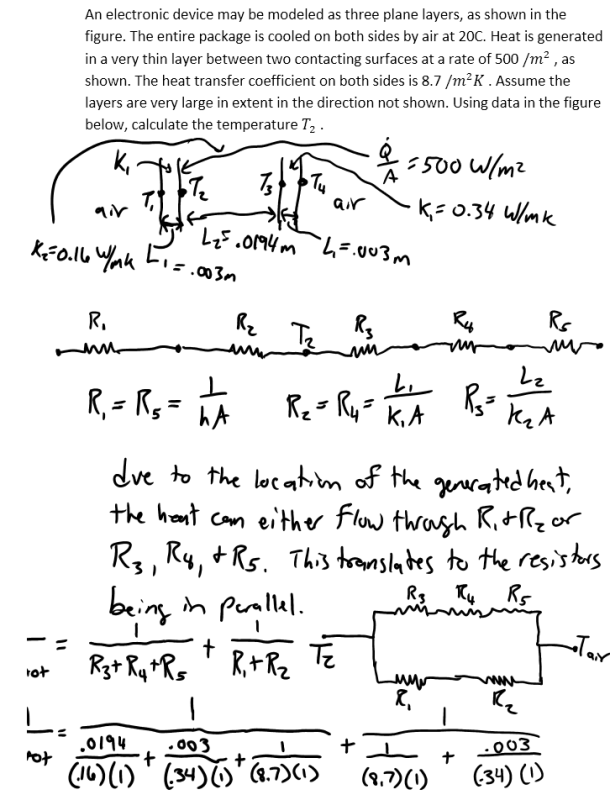An electronic device may be modeled as three plane layers, as shown in the figure. The entire package is cooled on both sides by air at 20C. Heat is generated in a very thin layer between two contacting surfaces at a rate of 500 /m^2 , as shown. The heat transfer coefficient on both sides is 8.7 /m^2 K . Assume the layers are very large in extent in the direction not shown. Using data in the figure below, calculate the temperature T_2 .

An electronic device may be modeled as three plane layers, as shown in the figure. The entire package is cooled on both sides by air at 20C. Heat is generated in a very thin layer between two contacting surfaces at a rate of 500 /m^2 , as shown. The heat transfer coefficient on both sides is 8.7 /m^2 K . Assume the layers are very large in extent in the direction not shown. Using data in the figure below, calculate the temperature T_2 .
